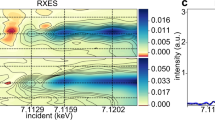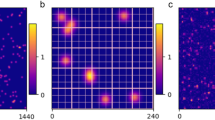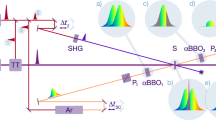Abstract
IN X-ray fluorescence analysis, the limit of detection of an element is usually set by statistical fluctuations in the continuous background at the wave-length of the most ‘sensitive’ line of the element. Consequently, the sensitivity of detection of an element will be improved if the intensity of the continuum is decreased. A typical example is the use of pulse height analysis with a detector the output pulse height of which is proportional to the energy of the incident quantum. By this means, overlapping orders of background can be rejected, resulting in increased sensitivity.
This is a preview of subscription content, access via your institution
Access options
Subscribe to this journal
Receive 51 print issues and online access
$199.00 per year
only $3.90 per issue
Buy this article
- Purchase on SpringerLink
- Instant access to full article PDF
Prices may be subject to local taxes which are calculated during checkout
Similar content being viewed by others
References
Evans, R. D., Handbuch Phys., 34, 229 (Springer-Verlag, Berlin, 1958).
Author information
Authors and Affiliations
Rights and permissions
About this article
Cite this article
CHAMPION, K., WHITTEM, R. Utilization of Increased Sensitivity of X-ray Fluorescence Spectrometry due to Polarization of the Background Radiation. Nature 199, 1082 (1963). https://doi.org/10.1038/1991082a0
Issue Date:
DOI: https://doi.org/10.1038/1991082a0
This article is cited by
-
Establishment and study of a polarized X-ray radiation facility
Nuclear Science and Techniques (2023)
-
Comparison of matrix effects on portable and stationary XRF spectrometers for cultural heritage samples
Applied Physics A (2009)



